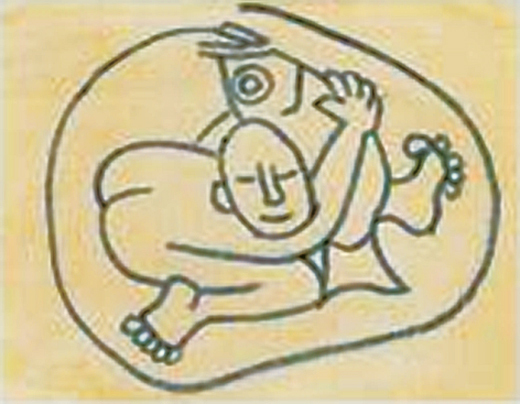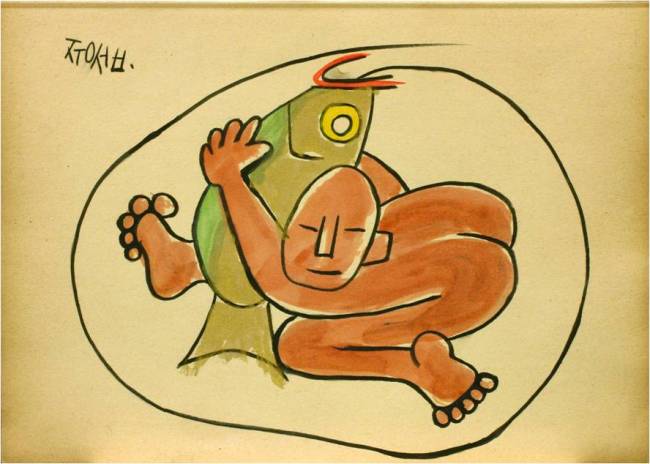 |
Original painting of Lee Jung-seob’s “Fish and a Kid” |
An art scandal involving fake paintings by two great Korean modern artists came to an end as the court ruled them to be forgeries last week.
Art experts have been casting doubts about the authenticity of 2,834 paintings, claimed to have been made by Lee Jung-seob and Park Soo-keun, since they were first unveiled to the world in 2005.
The court ruling came last Friday after several appraisals conducted by the National Forensic Service and museums over the past seven years, but left a deep distrust in the art world, according to art experts.
“The impact it had on the Korean art world are huge, as people began to doubt the authenticity of artworks,” said Kim In-ah, director of the Korean Art Appraisal Association.
“People began to say ‘Is that a real one?’ at national museums,” she said.
Her institution confirmed one of the paintings presented by a son of the late painter Lee to be a counterfeit.
“We appraised one of the paintings, ‘Fish and a Kid,’ and confirmed it wasn’t made by the painter,” said Kim. “It usually takes about three weeks for a team of experts to reach a conclusion, but it only took five minutes in this case. It was that obvious that it was a fake,” explained Kim.
 |
A forged painting of Lee Jung-seob’s “Fish and a Kid” (Korean Art Appraisal Association) |
The color painting is significantly larger than the original pencil drawing and the positions of the fish and the boy have been switched. The original one was pencil-drawn and the size of a cigarette case. It didn’t feature Lee’s unique line, which was also a key factor in determining the authenticity of the artwork.
The art scandal began when the painter Lee’s son presented eight works at an auction, which he claimed to have inherited from his father. The paintings, including “Fish and a Kid,” were sold at 930 million won ($860,000). However, suspicion grew concerning the authenticity of the works.
During the police investigation, more paintings were revealed by a collector, Kim Yong-su, who claimed they were proven as originals by the painter Lee’s family members.
“There are about 300 originals by Lee Jung-seob owned by museums and collectors and Kim’s claim drew suspicion because it didn’t make sense for an individual to own more than 2,000 pieces of art,” said Kim.
The appraisal result by the National Forensic Service found the paints used were produced in 1984. Lee Jung-seob died in 1956 and Park Soo-keun died in 1965.
However, how the counterfeits were made and by whom have not been revealed.
Collector Kim Yong-su said in an interview with a local broadcaster that he would want to die if the paintings are destroyed.
The forged artworks, which are being kept at the National Museum of Contemporary Art, Korea, are expected to be burned.
“There was nothing controversial about these paintings, because they were obviously fakes, but with the media attention and the public gossip, it left deep scar in the art world,“ said collector Kim.
By Lee Woo-young (
wylee@heraldcorp.com)









